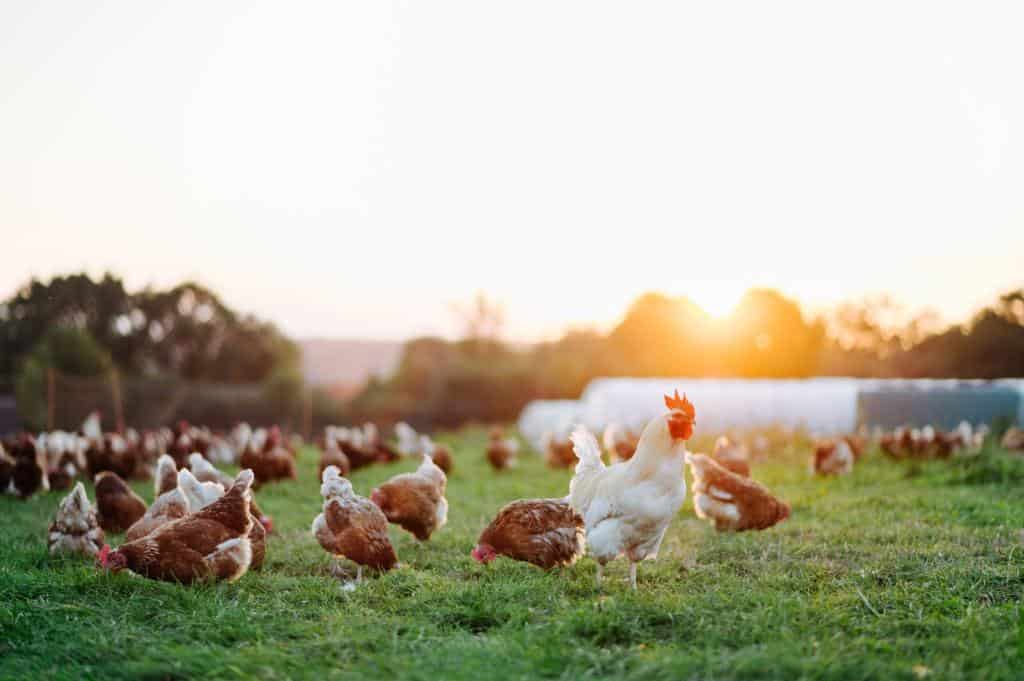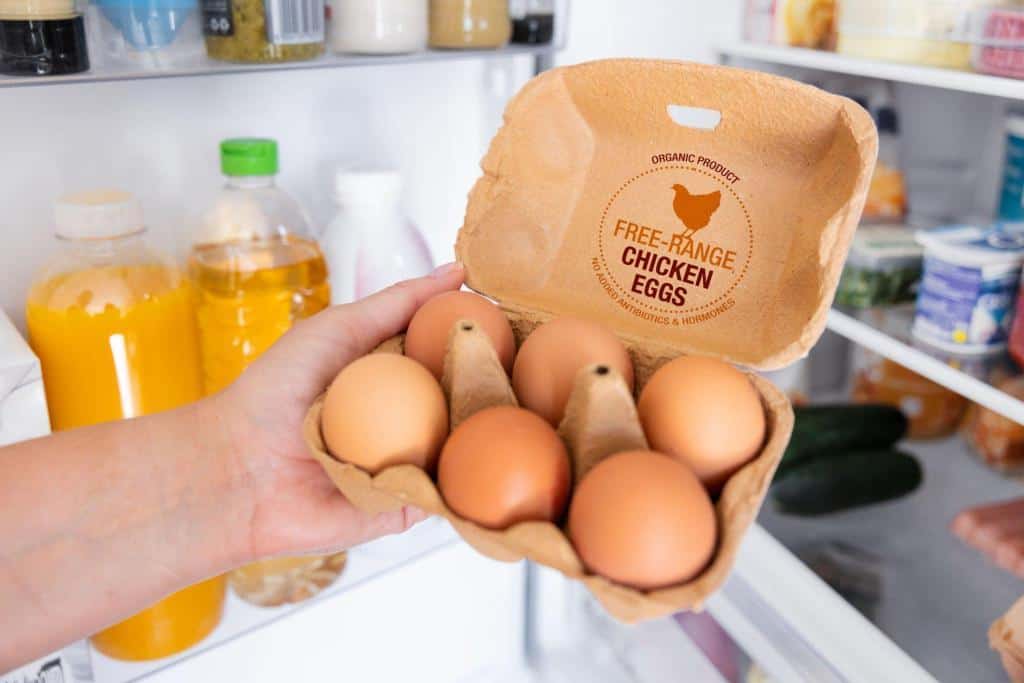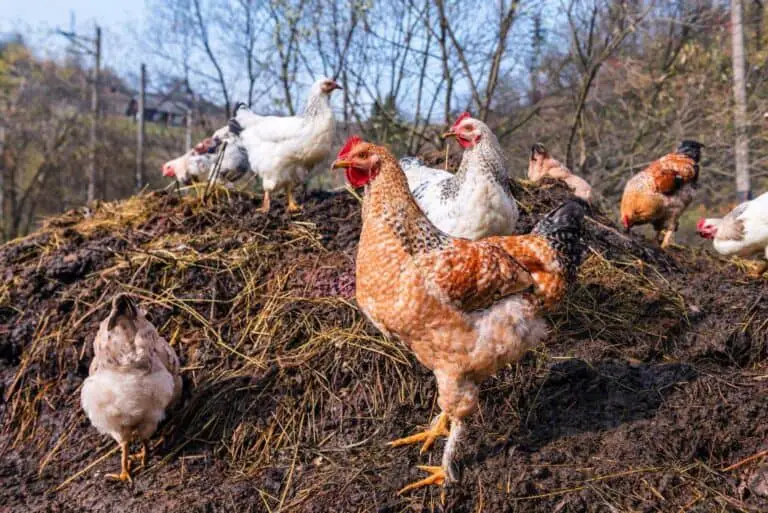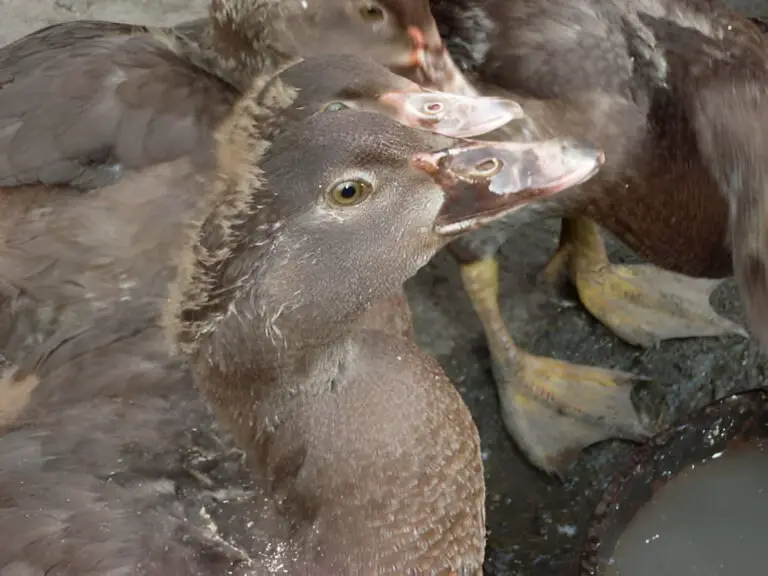Free Range Chickens Definition & Meaning: The Truth Behind the Label

“Free-range chickens” is a term that is frequently used in the poultry industry, but do you really know what it means? The term “free-range” can be misleading, and it’s essential to understand the truth behind the label before buying free-range chickens.
In this blog post, we’ll learn what “free-range chickens” means and what lies behind the label. We’ll contrast it with other labels like “organic chickens” and “cage-free chickens“.
We will show you how to buy free-range chicken by helping you understand how the chickens were raised and where to look for certifications. This will help you make smart choices. Don’t be fooled by the label; read on to discover the truth behind free-range chickens.
Free Range Chickens Definition & What Exactly Does It Mean
In the United States, the Department of Agriculture defines free-range animals as those that can roam and forage freely in open areas for at least part of their life cycle. This means, for example, that chickens must have access to the outdoors during daylight hours and are not kept indoors at all times.
The outdoor space must provide enough room for them to move around without overcrowding or other stressors. There must be enough grass and bugs for them to eat outside.
However, this definition does not specify how much time the chickens must spend outside, or what kind of conditions they must be kept in.
Be aware of labeling and certifications when buying free-range chicken. “Free-range” can be used loosely and doesn’t have a strict definition.
What Makes “Free Range Chickens” Different From “Organic Chickens” and “Cage-Free Chickens”?

Confusion is an ever-present issue when it comes to food labels, especially in the case of free-range chickens, organic chickens, and cage-free chickens. With so many distinctions between these types of chicken, it can be hard to determine which one you should buy or if they even make a difference.
All those labels have different rules for making and labeling chicken, which makes them very different from one another.
Organic Chickens
The USDA and other certifying bodies set very strict rules for how organic chickens should be raised. The main goal of these rules is to make sure that the chickens live in a healthy, natural environment that is free of chemicals and hormones.
One of the main requirements for organic chicken farming is that the chickens must have access to the outdoors. This means that the chickens don’t have to stay in a small space inside; they are free to move around and do things that come naturally, like looking for food.
Organic chicken farming requires farmers to use sustainable practices. This includes using natural predators to control pests instead of chemical pesticides and using composting to manage waste.
They must also be fed an organic diet with no genetically modified feed, antibiotics, or growth hormones. Farmers can’t use antibiotics or hormones to make their animals grow faster or make more money. This is to keep antibiotic resistance and hormone residue from getting into the meat.
Cage-Free Chicken
Cage-free chicken is a way of raising chickens in which the birds are not confined to small cages and are free to move around in a certain area. People think this way of farming is better than traditional battery cage systems, in which chickens are kept in small cages and can’t move around or act in a natural way.
One of the best things about cage-free chicken farming is that it lets the chickens do things that are natural to them, like foraging, making nests, and bathing in the dust. This reduces stress and health issues that can occur when chickens are confined.
Cage-free chicken farms also usually give each bird more space than battery cage systems, which can help clean the air and lower the risk of spreading diseases.
However, cage-free does not mean free-range. Even if they don’t live in cages, chickens may still be kept in a barn or warehouse and have little to no access to the outside. Overcrowding and poor sanitation can occur in cage-free chicken farms with large flocks.
Another issue is that cage-free farming does not necessarily mean that the birds are treated humanely or ethically, or that they are not given antibiotics or hormones. Consumers should look for certifications such as “Animal Welfare Approved” or “Certified Humane” to ensure that the chicken they are buying was raised in a humane and ethical way.
The Reality of Free Range Chicken Farms
There are many common misconceptions about free range farms. Some consumers assume that free range chickens are treated humanely and have a high quality of life, but this is not always the case.
Some free-range farms may still keep chickens in overcrowded and unsanitary conditions and may not provide enough space for the birds to move around freely.
Problems with the current standards and how they are enforced: Because there aren’t any clear standards for “free range” farming, the label can be abused and used for unfair gain. The USDA does not always inspect free range farms, which means that some farmers may use the label without actually providing the chickens with a quality of life that meets consumer expectations.
Pro and Cons of Raising Free Range Chickens
Pros
Cons
- Chickens are able to engage in natural behaviors such as foraging, dust bathing, and socializing.
- Healthier and more flavorful meat due to a diet that is free from antibiotics and hormones.
- Promotes biodiversity and reduces environmental impact of farming.
- More humane treatment of animals.
- Consumers have more options for ethically and sustainably produced meat.
- Control of get rid of unwanted bugs and pests from farm.
- Higher costs due to increased land and labor requirements.
- Higher susceptibility to disease and predation, leading to higher mortality rates.
- Potential for predators to attack the chickens.
- Difficulty in managing a larger area of land.
- Weather conditions may be a limiting factor for outdoor growth.
- Making a mess and scratching in landscaped areas
Where to Buy Free-Range Chicken (Meat)?
When it comes to buying free-range chicken, there are several options to consider.
- Buying from a local farmer or farmer’s market is one of the most popular choices. These farmers often raise their chickens on small, sustainable farms, and they are usually able to provide you with a variety of cuts and sizes of chicken. They can also tell you about the conditions and how to raise free-range chickens and what they were fed.
- Another option is to purchase free-range chicken from a natural food store or co-op. These stores typically source their chicken from small, sustainable farms and they often have strict standards for the welfare of the chickens. They also have knowledgeable staff that can assist you in selecting the best product.
- Online meat delivery services are also a good option for buying free-range chicken. These companies typically have a wide variety of chicken cuts and sizes and they source their chicken from small, sustainable farms. They often have detailed information about the farms, the living conditions of the chickens, and what they were fed. Some of these companies also offer home delivery, which is a convenient option for those who want to avoid grocery stores.
- Lastly, you can also consider raising your own free-range chickens in your backyard. This will give you full control over the conditions under which your chickens are raised, and you will be able to ensure that they are fed a healthy diet and treated humanely. However, this option may not be feasible for everyone due to space limitations or local laws and regulations.
| If you’re concerned about how the chicken you buy was raised, the best way to find local or regional farms that sell at accredited farmers markets, specialty shops or co-ops with humanely raised standards, or through CSA models. Some of these farms even offer farm tours occasionally, so you can see where your food is grown. |
Alternatives to Free Range Chicken Farming
Alternatives to free-range chicken farming include organic and pasture-raised farming methods.
Organic and pasture-raised farming methods are better for the animals and the environment, and they can also produce healthier and tastier chicken. Studies have shown that chickens raised on pasture have higher levels of omega-3 fatty acids, vitamin E, and beta-carotene than chickens raised on factory farms.
The chickens also tend to be leaner, which can be beneficial for people looking to maintain a healthy diet.
Organic Farming Chicken
Organic farming is based on giving chickens a natural, healthy diet without using pesticides, hormones, or antibiotics that are made in a lab. Chickens raised organically must also have access to the outdoors.
Organic chickens are fed a diet of organic grains, which are grown without the use of synthetic pesticides or fertilizers. This not only benefits the chickens but also helps reduce the impact of farming on the environment.
Chickens raised on organic farms or in the wild are generally healthier and happier than those raised on factory farms. These methods promote biodiversity, reduce pollution, and conserve water.
Pasture-Raised Farming Chicken
Pasture-raised farming methods, on the other hand, go a step further by allowing chickens to roam freely outdoors and forage for food. These methods are often considered to be more humane and environmentally friendly than traditional free range farming.
When chickens are raised on pasture, they can look for their own food. This gives them a more natural diet and lets them do natural things like pecking and scratching.
Conclusion
The term “free-range” has become a popular label used in the poultry industry, but it is important to understand the true meaning behind it. Free-range chickens are birds that have access to the outdoors, but the definition of “outdoors” and the amount of time the birds spend outside can vary greatly between farms.
Even though free-range chickens may have a better quality of life than those raised in cages, it is important to look for certifications or labels that show the chickens were raised in a humane and ethical way. Consumers should also be aware of the conditions in which the chickens were raised, and should consider visiting the farm or asking farmers questions about their practices.
By understanding the truth behind the label, consumers can make informed decisions when purchasing free-range chicken, and support farmers who are committed to raising chickens in a humane and sustainable manner.






